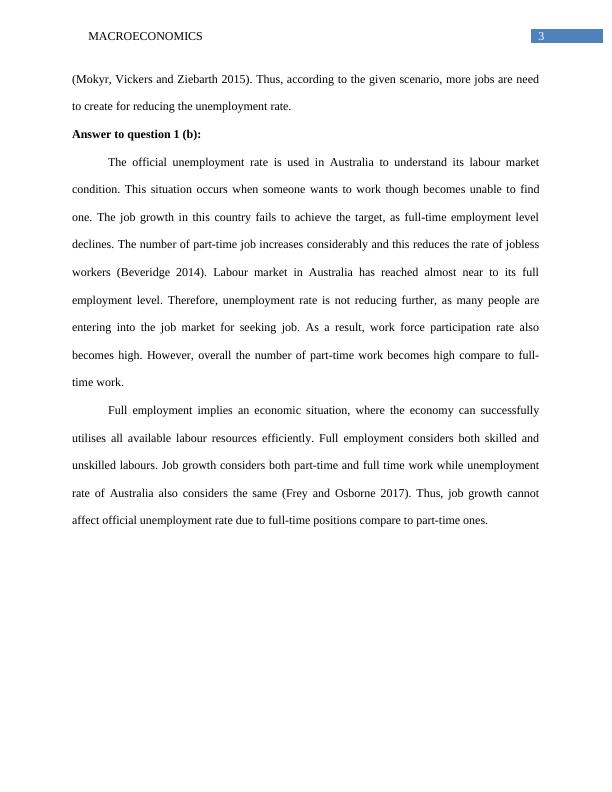Macroeconomics
Read the news article below and answer all questions.
13 Pages2395 Words219 Views
Added on 2023-06-04
About This Document
This article discusses the concepts of job growth, labour force participation rate, and unemployment rate in the context of the Australian labour market. It also explains the aggregate expenditure model and the dynamic AD-AS model to understand the economic growth and inflationary pressure in the country.
Macroeconomics
Read the news article below and answer all questions.
Added on 2023-06-04
ShareRelated Documents
End of preview
Want to access all the pages? Upload your documents or become a member.
Macroscopic macroeconomic models for assessing the unemployment rate in Australia
|10
|2146
|297
Macroeconomics
|9
|1724
|115
Eastern region has more service industries
|8
|1470
|13
Impact of Unemployment on Australian Economy: Analysis from 2008 to 2018
|8
|1149
|319
Measures to Overcome Unemployment | Jordan Case Study
|10
|2570
|39
Macroeconomics: Unemployment and Economic Growth in Greece
|15
|6025
|343




